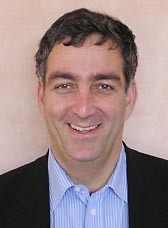Cornell and Stanford to work with Israel and Jordan on Bridging the Rift research center to include world's first databank for all living systems
By David Brand
On March 9, Cornell University will participate in a groundbreaking ceremony 50 miles south of the Dead Sea, on the border between Israel and Jordan. Land donated by each country will be joined to form a 150-acre site for a research facility, the Bridging the Rift (BTR) Center, which will include the world's first databank of information about all living systems.
The databank will be the core of the facility's centerpiece, the Library of Life, led by Cornell and Stanford University scientists who will gather, organize and model information to quantify and characterize all living systems. The library will be a research and education center operating a databank, yet to be developed, that will assemble information on living systems, from microbes to plants to animals, using digital images and global positioning data. Information also will flow from ecological and environmental investigations, molecular research and DNA sequencing.
The research center will develop computer modeling systems to make predictions at genetic levels and to help understand coevolution of species and the ways in which ecology affects DNA, and the reverse. Both Cornell and Stanford will offer doctoral degrees at the BTR Center.
Cornell President Jeffrey S. Lehman, who will attend the ceremony at the border site (it is known as central Arava on the Israeli side and Wadi Araba on the Jordanian side), says, "This project is an enormous undertaking, one that will require the collaboration of scientists from every corner of the world. We are grateful that the governments of Israel and Jordan have taken the first steps to show how this collaboration can evolve. This is a unique scientific environment, the perfect place to begin the project."
Because the new databank will gather a hugely diverse amount of information about living systems, it will be a major advancement over GenBank, the database operated by the National Institutes of Health in the United States. GenBank, which stores genetic sequences, is part of the International Nucleotide Sequence Database Collaboration, which also includes the DNA DataBank of Japan and the European Molecular Biology Laboratory.
Media Contact
Get Cornell news delivered right to your inbox.
Subscribe
